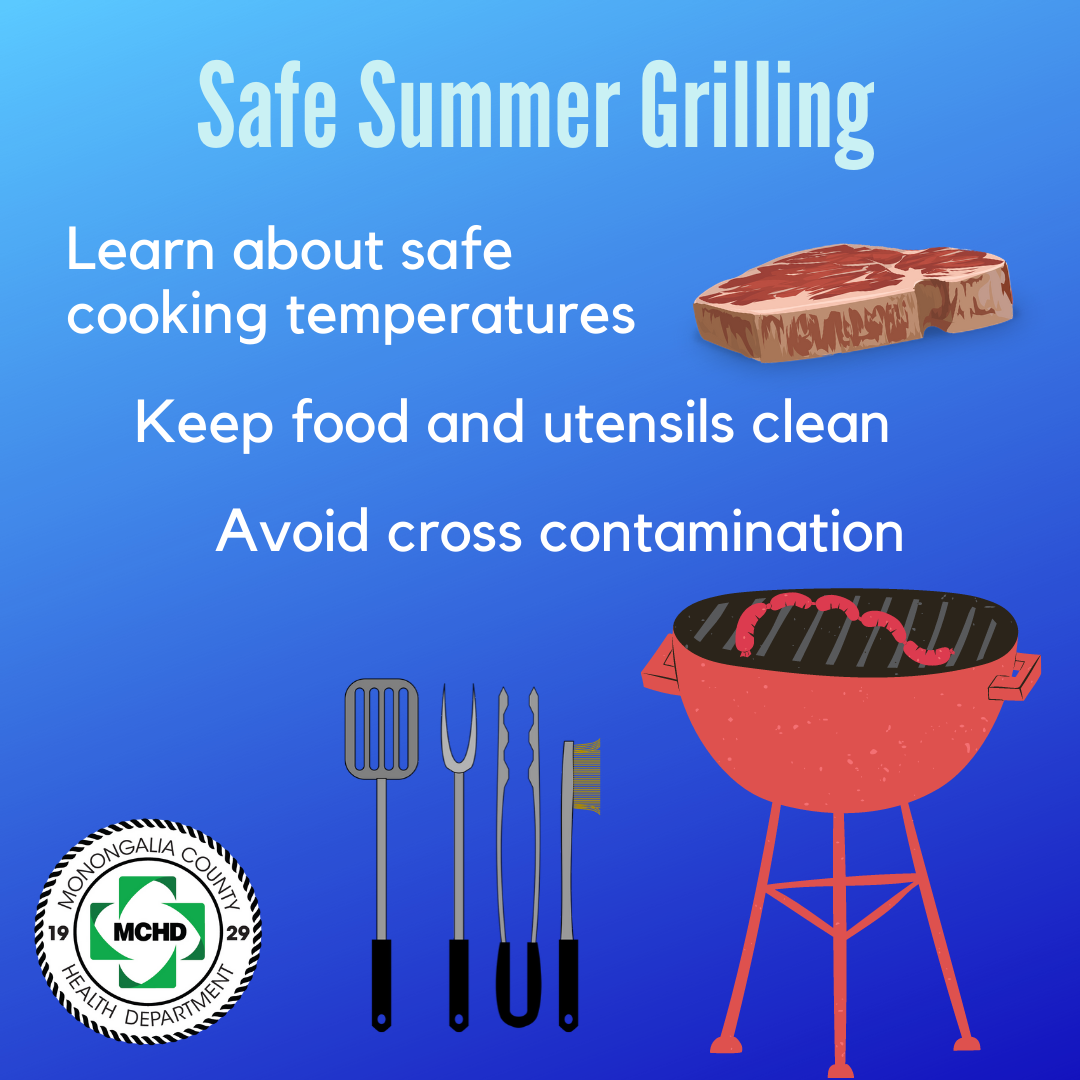Don't be chilling when you're grilling. Follow these tips for safe grilling.

Jul. 1, 2020
By Taylor Shultz
It’s summer and that means vacations, cookouts and celebration. We spend a lot of time outside during these months, even eating and cooking. But there can be more risks when grilling food if you are not careful.
Are you grilling correctly?
The first step to ensuring your food grilling safety starts when purchasing food. While planning your event, check the recall list to make sure you are staying away from those items.
Then, while shopping, buy raw meat and poultry last. This will keep your meat as cold as you can and separated from your other food. When you are bagging your groceries and heading for the car, make sure the raw meat and poultry go into individual bags to reduce cross contamination.
Don’t forget to purchase a meat thermometer if you do not already have one. This is an essential tool when grilling.
Go straight home after the grocery store—do your fun shopping first, not when you have meat and other cold food items with you.
Now, we are to the step of preparing to cook those yummy summer foods. If you need to thaw your meat, safely do so in the refrigerator. If you are too hungry to wait for it to thaw in the refrigerator, then you can also safely defrost in the microwave as long as you immediately transfer it onto the grill.
If you are planning to marinade (which is a great idea—yum!), then you want to marinade in the refrigerator, not on the counter. And if you want to use it as a sauce as well, save some in a separate container before you put the raw meat into the marinade.
We are ready to start grilling now!
Okay, not quite. We need to make sure everything is clean and ready to go. Wash your hands with soap and water. Keep your kitchen work surfaces, utensils and brushes clean as well.
Keep a clean plate near the grill, so that when the meat is done cooking it can be transferred from the grill to a plate that is not covered with raw juices.
Okay, now we are ready—for real this time.
Get out your new (or old) meat thermometer, because it is the star of the show when grilling. Meat and poultry may brown quickly and appear done, even when they are not. Using a meat thermometer ensures that they have reached the correct internal temperature.
According to the Centers for Disease Control and Prevention, the following are the recommended internal temperatures:
• Grilling:
o 145°F: whole cuts of beef, pork, lamb, veal and fish
o 160°F: hamburgers and other ground beef
o 165°F: all poultry and pre-cooked meats, like hot dogs
• Smoking:
o 250°F – 300°F: inside smoker
• After grilling
o 140°F or warmer until it is served
Leftovers are also a part of the grilling experience. Who doesn’t love getting more than one meal out of a cooking session?
Refrigerate leftover meat and poultry within two hours of cooking or one hour if above 90°F. If you choose to freeze leftovers, then they should keep for about four months. Then, when reheating your leftovers, they should reach 165°—use that meat thermometer again.
It is important to cook your food properly, so you can prevent you and your family from getting a foodborne illness. Nobody wants to be sick ever, but especially during the summer months.
So fire up the grill and take advantage of summer while staying safe!
Taylor Shultz is a former public information office intern at Monongalia County Health Department.